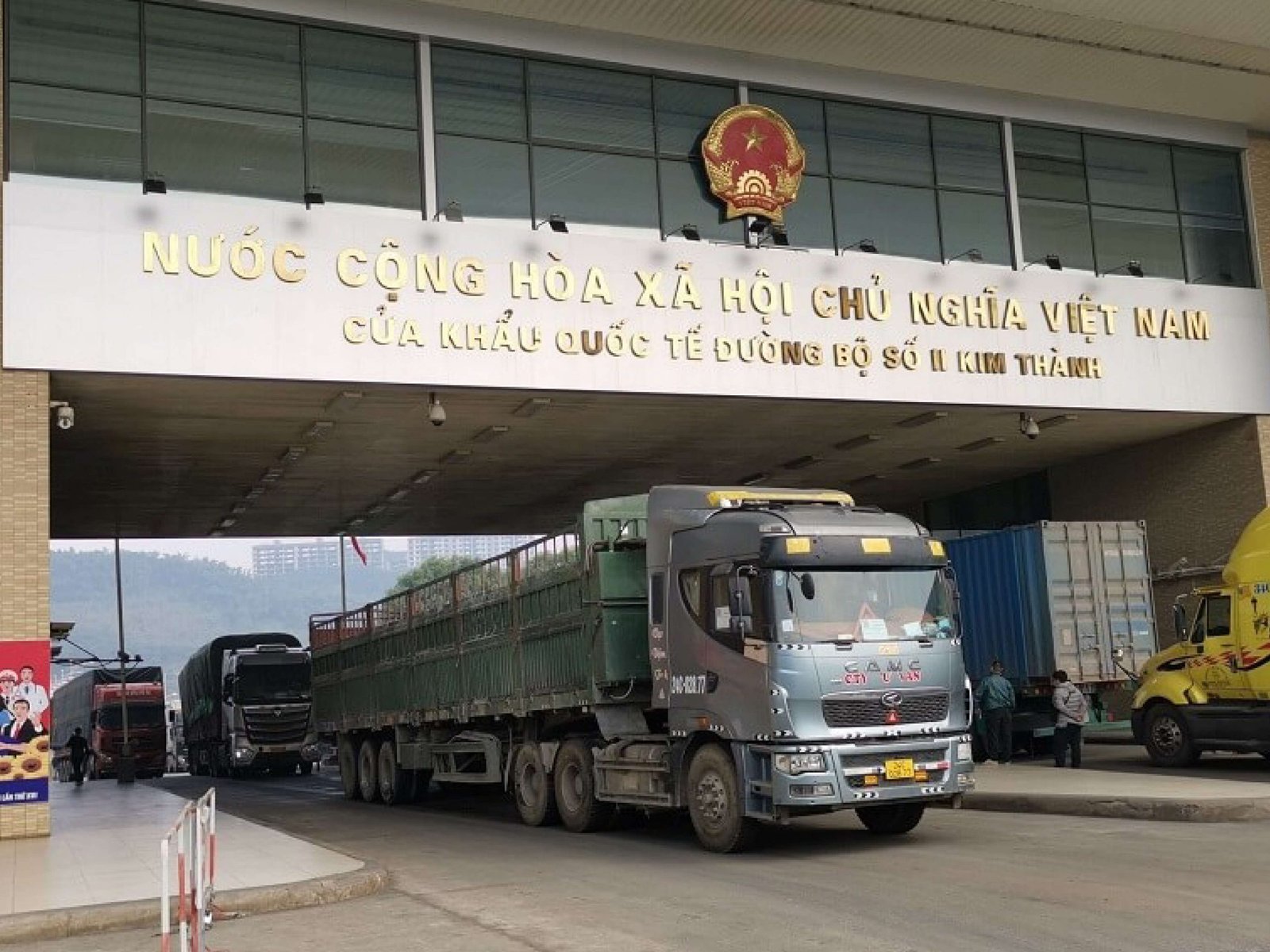HIGHLIGHTS
- Transshipment of Goods is the sale of goods purchased from one country or territory to another country or territory without having to follow export and import processes or Vietnam’s international trade terms (incoterms).
- Temporary import refers to the transit of foreign goods on a country’s territory for a set length of time before exporting to a third-country market.
- The next step in the temporary import process is re-export. Following customs clearance procedures in Vietnam, it will be exported to another country. The phenomenon of items being exported twice should be referred to as re-export.
- Items temporarily exported for re-import are typically items exported for repair, warranty, production, construction, or lease under contracts with foreign countries.
- The transit of goods refers to the transportation of items owned by foreign organizations and individuals via Vietnamese territory, including transit, transmission, warehousing, v.v.
FULL ARTICLE
Transshipment of Goods
Transshipment of Goods is the sale of goods purchased from one country or territory to another country or territory without having to follow export and import processes or Vietnam’s international trade terms (incoterms).
The idea of ‘importing goods,’ as defined in Clause 1, Article 30 of the 2005 Trade Law, is the purchase of products from a nation or territory for sale to a country or territory outside Vietnam without through import or export procedures into or out of Vietnam.
Transshipment of Goods can be used to sell any type of item. Procedures for transferring borders through Vietnam border gates are settled at border gate customs sub-departments with the exception of:
- Goods on the list of goods banned from export or suspended from export.
- Goods on the list of goods banned from import or suspended from import.
- Goods exported and imported under license, traders can transfer borders through Vietnam border gates after obtaining a license from the Ministry of Industry and Trade.
Form for transshipment of goods
- Goods are shipped directly from the exporting country to the importing country, bypassing the Vietnamese border gate.
- Goods are delivered from the exporting country to the importing country via the Vietnamese border gate, but no import or export procedures are carried out into or out of Vietnam.
- Goods are transferred from the exporting nation to the importing country via the Vietnamese border gate and placed in bonded warehouses, transshipment areas at Vietnamese ports, and no import or export processes are carried out.
The transfer is carried out on the basis of two independent contracts: purchase contracts signed by Vietnamese traders with exporting country traders and sales contracts signed by Vietnamese traders with importing country traders. The purchase agreement might be signed before or after the sales agreement.
For example, Company A in Vietnam purchases cranes from Company B in the United States but does not directly import into Vietnam but instead sells to Company C in India.
Temporary import and re-export
Under Article 29 of the Trade Law 2005, temporary import or re-export is a form of goods brought from abroad or from special areas located on the territory of Vietnam (considered as separate customs areas as prescribed by law into Vietnam) carrying out procedures for importing such goods into Vietnam and carrying out procedures for exporting such goods out of Vietnam.
Temporary import refers to the transit of foreign goods on a country’s territory for a set length of time before exporting to a third-country market.
The next step in the temporary import process is re-export. Following customs clearance procedures in Vietnam, it will be exported to another country. The phenomenon of items being exported twice should be referred to as re-export.
Temporary import for re-export is handled through two different contracts. Vietnamese traders signed a buy contract with the exporting country, while Vietnamese traders signed a sales contract with the importer’s traders. The purchase agreement might be signed before or after the sales agreement.

Forms of temporary import for re-export
Temporary import and re-export in the form of business
Temporary import and re-export will be regarded as legal business in Vietnam in this manner. Traders are permitted to do business temporarily imported or re-exported provided they are lawfully established in accordance with enterprise law and are granted business identification numbers temporarily imported and re-exported by the Ministry of Industry and Trade.
Temporary import and re-export under warranty, maintenance, lease or borrowing contracts
Unless the commodities are forbidden from import and export, Vietnamese traders have the right to enter into contracts with foreign traders on goods temporarily imported for re-export for the purposes of warranty, maintenance, lease, or borrowing. After performing warranty, maintenance, rental, and borrowing on products temporarily imported for re-export for a set length of time, foreign traders continue to re-export such goods outside Vietnam’s territory.
The period required for temporary import and re-export will be calculated based on the specific item, equipment, qualifications, and warranty requirements. As a result, the merchant parties have the right to self-agree on a suitable duration of time in the signed contract.
Temporary import for re-export for recycling, warranty at the request of foreign traders
This activity is defined as a foreign trader placing orders with Vietnamese traders for the recycling and warranty of goods for specific foreign traders. Vietnamese traders will return such goods to international traders who have ordered them after recycling and warranty. It is performed at customs offices and does not necessitate a temporary entry or re-export permission.
Goods temporarily imported into Vietnam for recycling and warranty purposes shall be re-exported to the foreign trader who originally exported to Vietnam, rather than to a third country or another foreign trader, as in the previous two forms.
Temporary import and re-export of goods for display, introduction, participation in trade fairs and exhibitions
The goal of this form is to provide product information to consumers while also boosting domestic and international trade. As a result, having a temporary import or re-export license is not required, but merely to carry out import and export operations at customs offices. In addition to the norms of the Commercial Law, traders must fully comply with restrictions on product display and introduction, as well as exhibition and fair regulations.
Temporarily import re-export products for humanitarian and other purposes
In some cases, due to the conditions of medical equipment, machinery, and equipment in Vietnam that do not meet the needs of medical examination and treatment in the country, and foreign organizations for humanitarian purposes want to bring medical equipment to support Vietnam, there will be a form of temporary import and re-export of foreign medical examination and treatment machinery, equipment, and tools entering the territory of Vietnam. This form does not necessitate the issuance of a temporary re-entry permit.
In exceptional circumstances, such as when temporarily importing and re-exporting goods such as weapons, equipment, military and security equipment for the purposes of national defense and security, the Ministry of National Defense and the Ministry of Public Security must be consulted and granted permission.
For example, because the conditions of medical equipment, machinery, and equipment in Vietnam have not satisfied the country’s needs for medical examination and treatment. As a result of this issue, a number of foreign organizations with the desire to help Vietnam on humanitarian grounds and bring in medical equipment to support Vietnam will appear in the form of temporary import and re-export of machinery and equipment, foreign medical instruments entering Vietnamese territory.

Temporary export and re-import
In contrast to “Temporary Import – Re-Export,” “Temporary Export – Re-Import of Goods” means that goods are brought abroad or placed in special areas located on the territory of Vietnam (considered as separate customs areas as prescribed by law) carrying out procedures for exporting such goods out of Vietnam and carrying out procedures for re-importing such goods into Vietnam. (According to the Commercial Act of 2005).
Items temporarily exported for re-import are typically items exported for repair, warranty, production, construction, or lease under contracts with foreign countries.
After fulfilling the leasing contract, processing, and maintenance repair, machinery and products will be imported again. The temporary import for re-export will make it easier for businesses and dealers to declare and pay taxes at customs authorities.
For example, after taking the sample to an overseas exhibition, the things that remain after sale must be imported back into the exported country.
Transit of goods
The transit of goods refers to the transportation of items owned by foreign organizations and individuals via Vietnamese territory, including transit, transmission, warehousing, shipment separation, changes in modes of transport, and other labor performed during transit.
Items transit services are commercial activities in which traders transport goods held by foreign organizations and individuals through the territory of Vietnam for a fee (According to the 2005 Commercial Act).
According to Article 242 of the LTM 2005, “all commodities owned by foreign organizations and persons may pass the territory of Vietnam and only need to carry out customs processes at the import and export gates as defined by law, except in the following cases:
- Goods are weapons, ammunition, explosives and other high-risk goods.
- Goods subject to a business prohibition, export ban, or import ban may only traverse the Vietnamese territory with the permission of the Minister of Trade.
Transit is performed under the terms of a service provision contract. Goods entering and leaving Vietnam must follow the designated border gate and route, and the number of products exported must be exactly equivalent to the amount of goods imported. Furthermore, commodities entering Vietnamese territory are subject to the monitoring of Vietnamese customs authorities throughout the transit period.

To transit products via the territory of Vietnam, Vietnamese traders must hire Vietnamese transit traders to perform, except in the case of:
- The organization; foreign individuals carrying out their own transit of goods through the territory of Vietnam.
- Hiring foreign traders to transit goods through the territory of Vietnam must comply with international treaties to which the Socialist Republic of Vietnam is a member, as well as the provisions of Vietnamese law on exit, entry, and transport.
Goods may not be stored in Vietnam, except for the cases specified in Clause 2, Article 246 of the 2005 Trade Law.
Except in circumstances where products are stored in Vietnam or damaged or damaged during transit, the maximum transit period in Vietnam’s territory is thirty days from the date of completion of customs operations at the import gate.
For example, in order to transport this item from Malaysia to Laos, it is normally necessary to leave the items in Malaysia and then continue from Vietnam to Laos. As a result, the voyage from Malaysia to Laos must pass through a third country, Vietnam, which is why this activity is known as transit.
Huyen Tu
M&A in Logistics: The driving force behind the new investment trend













